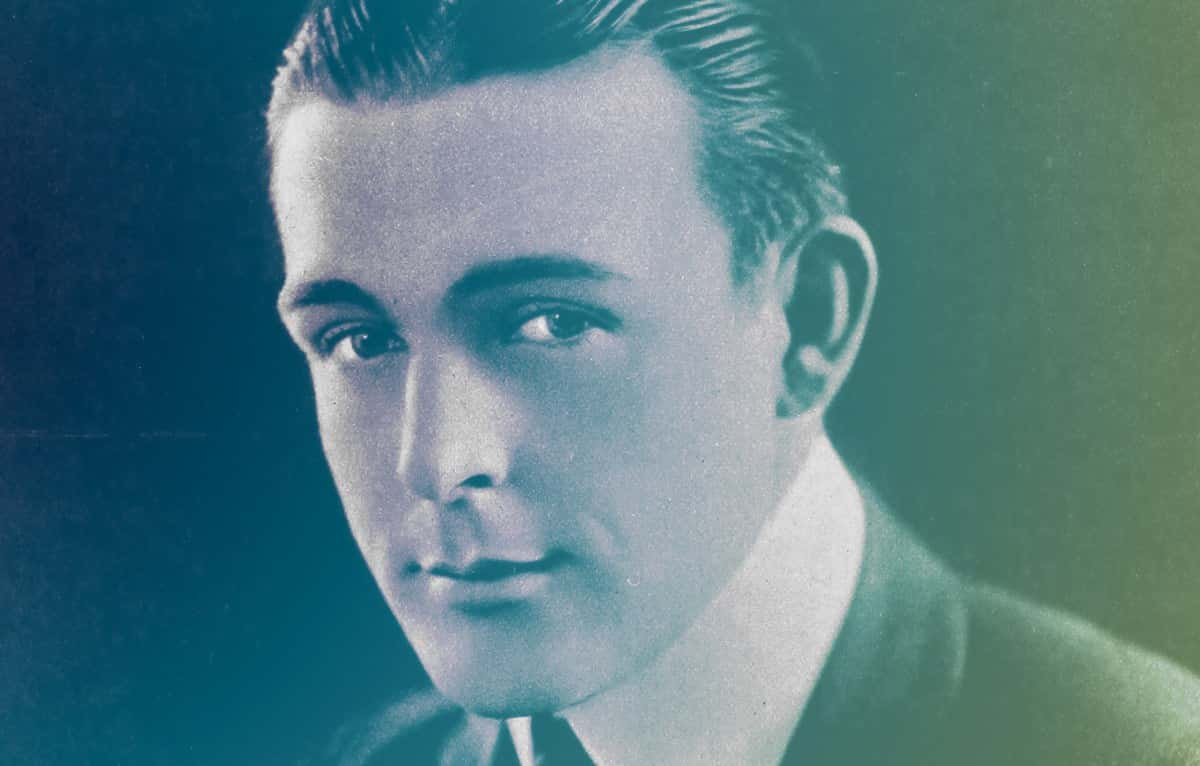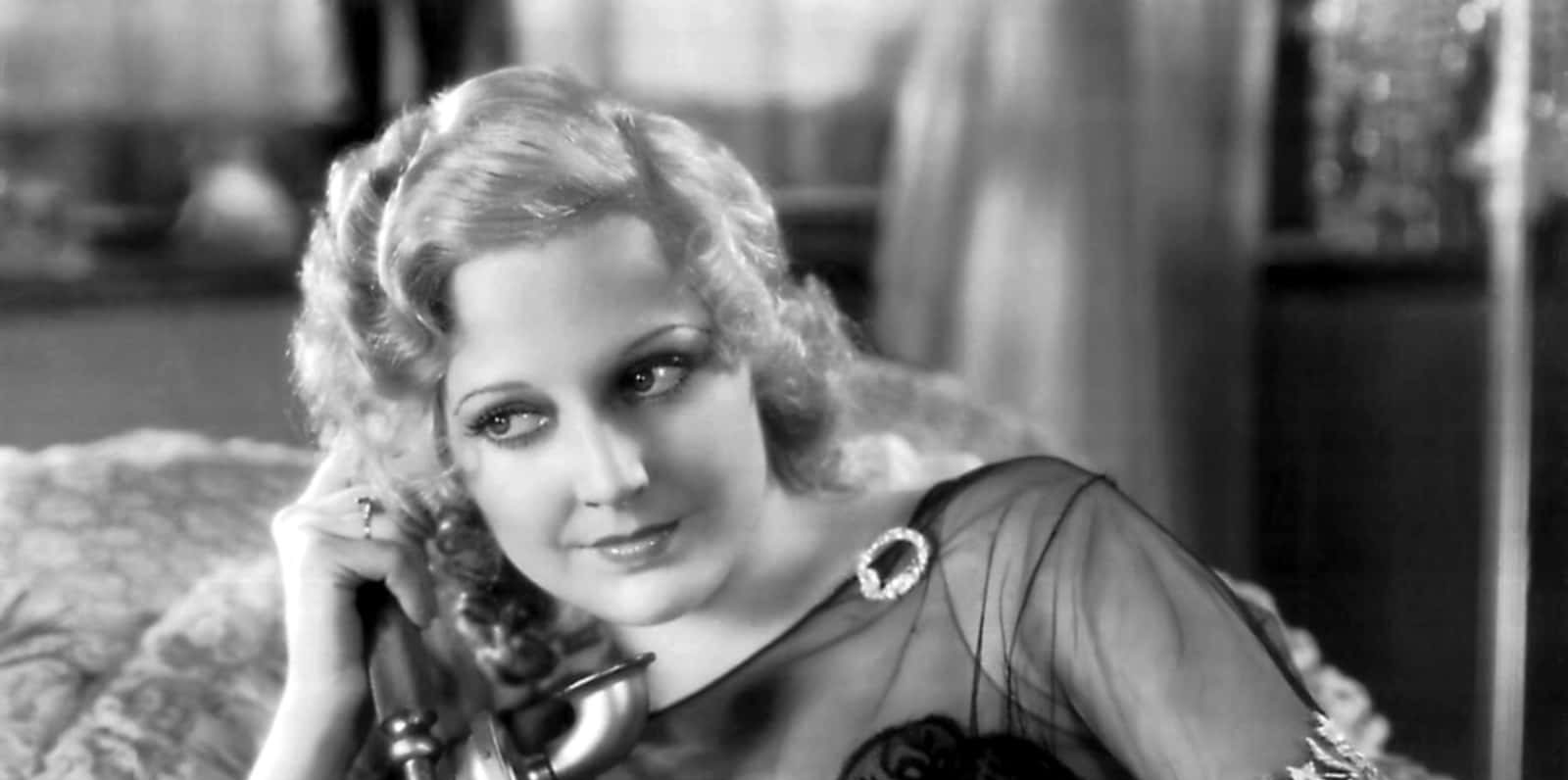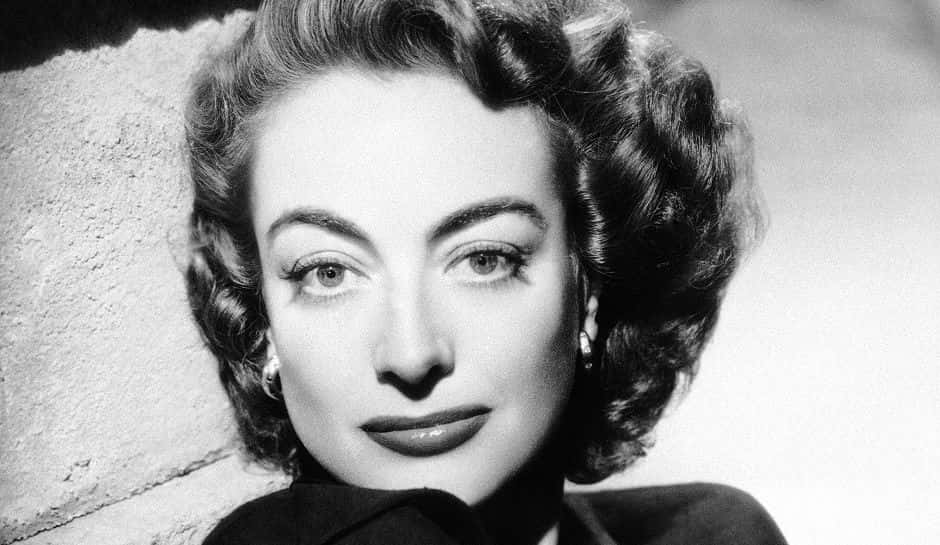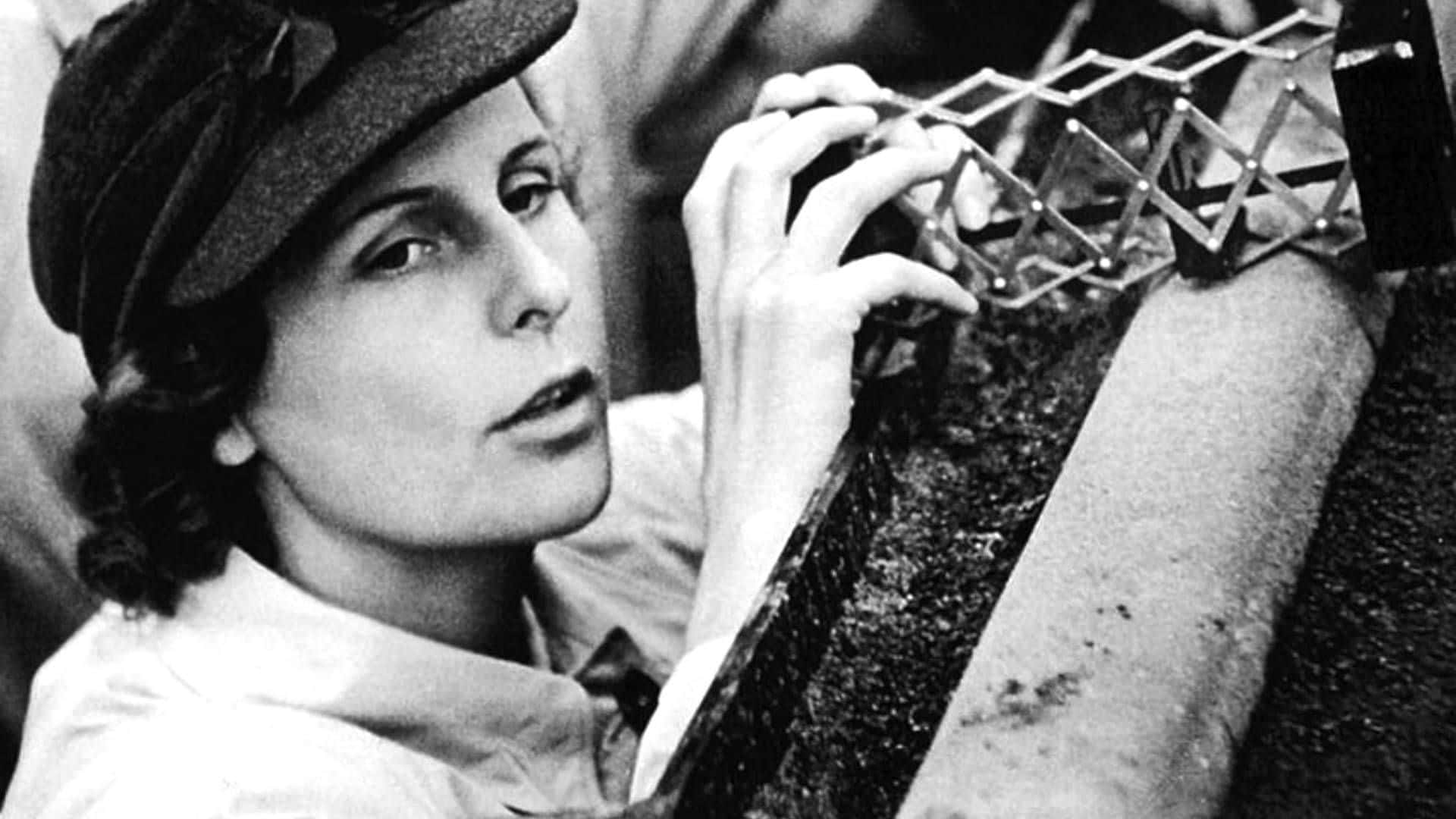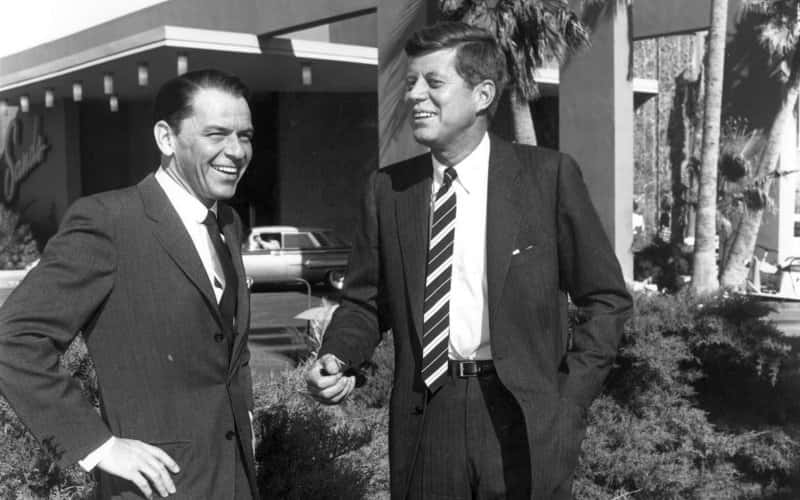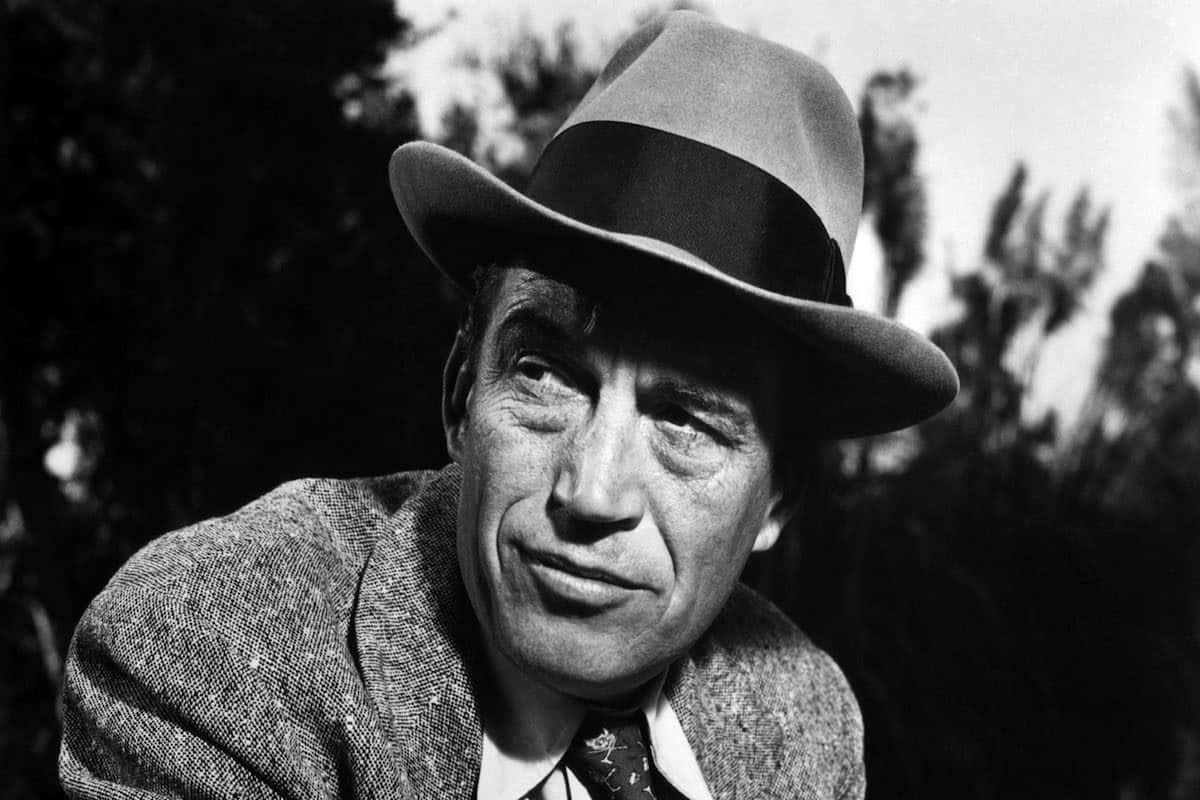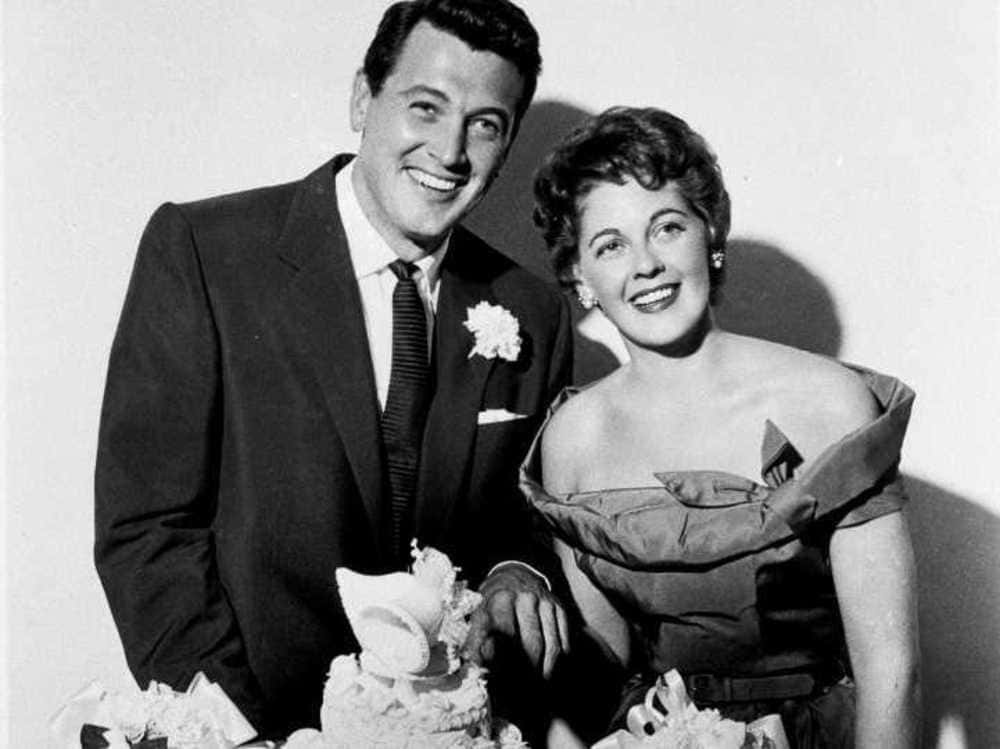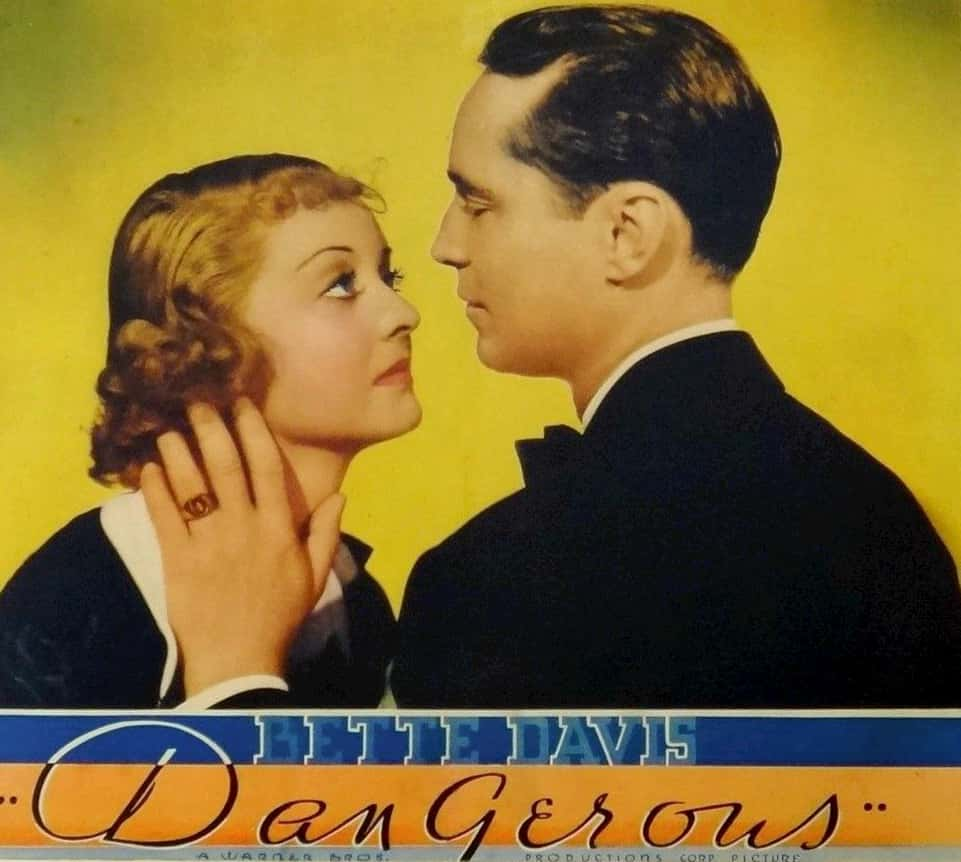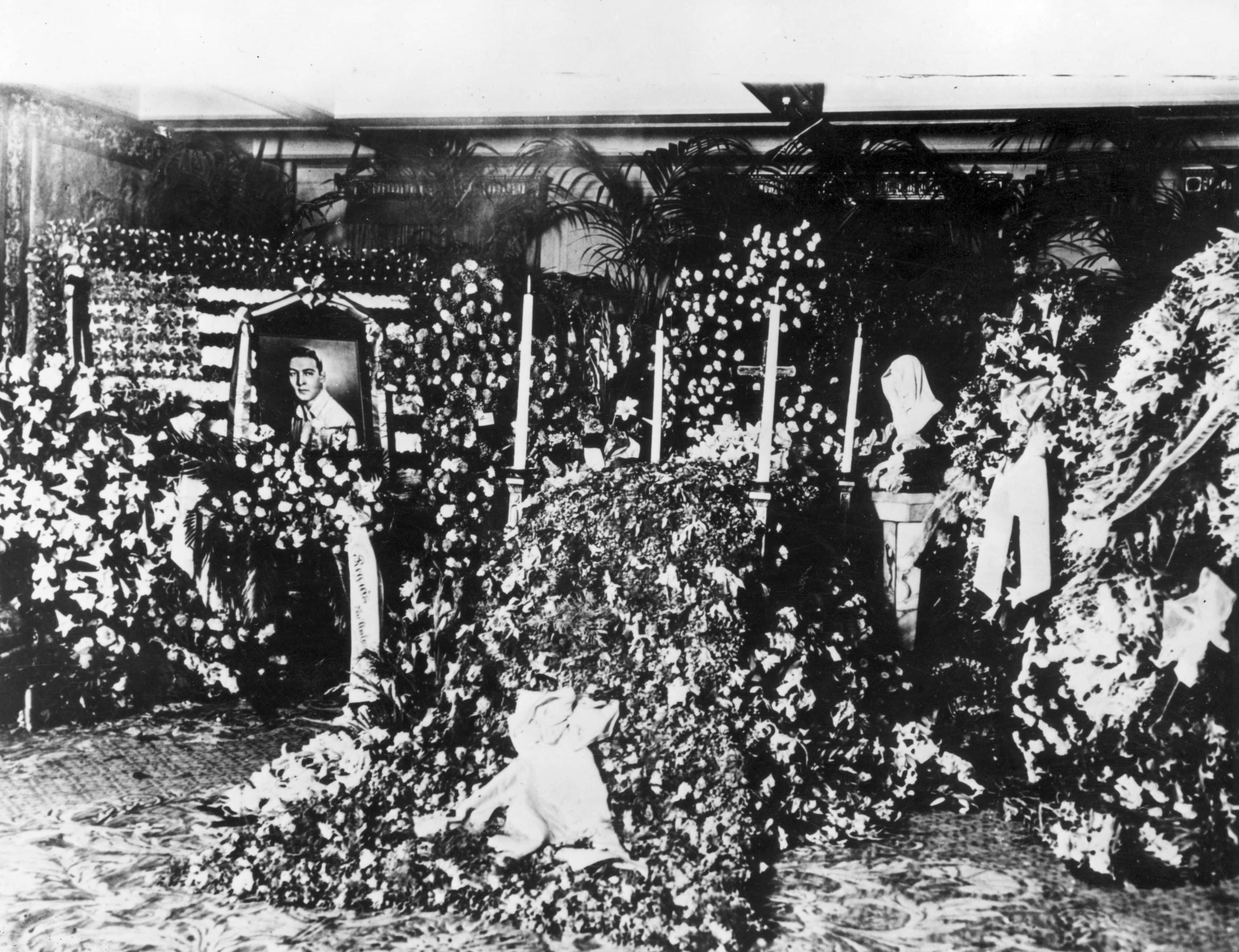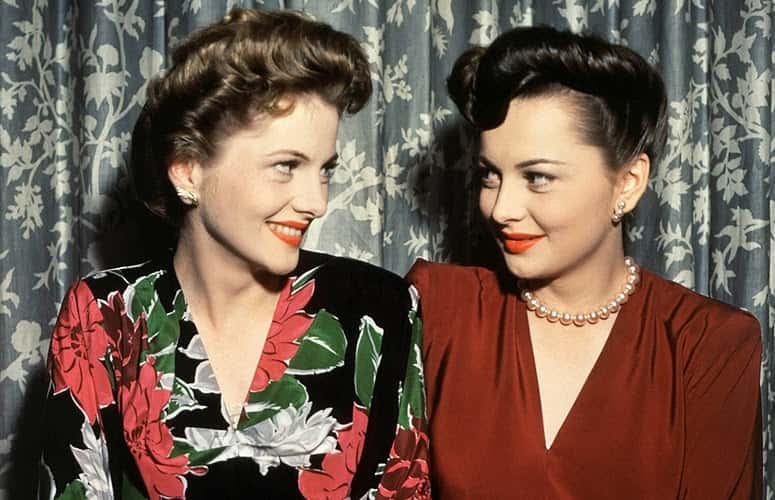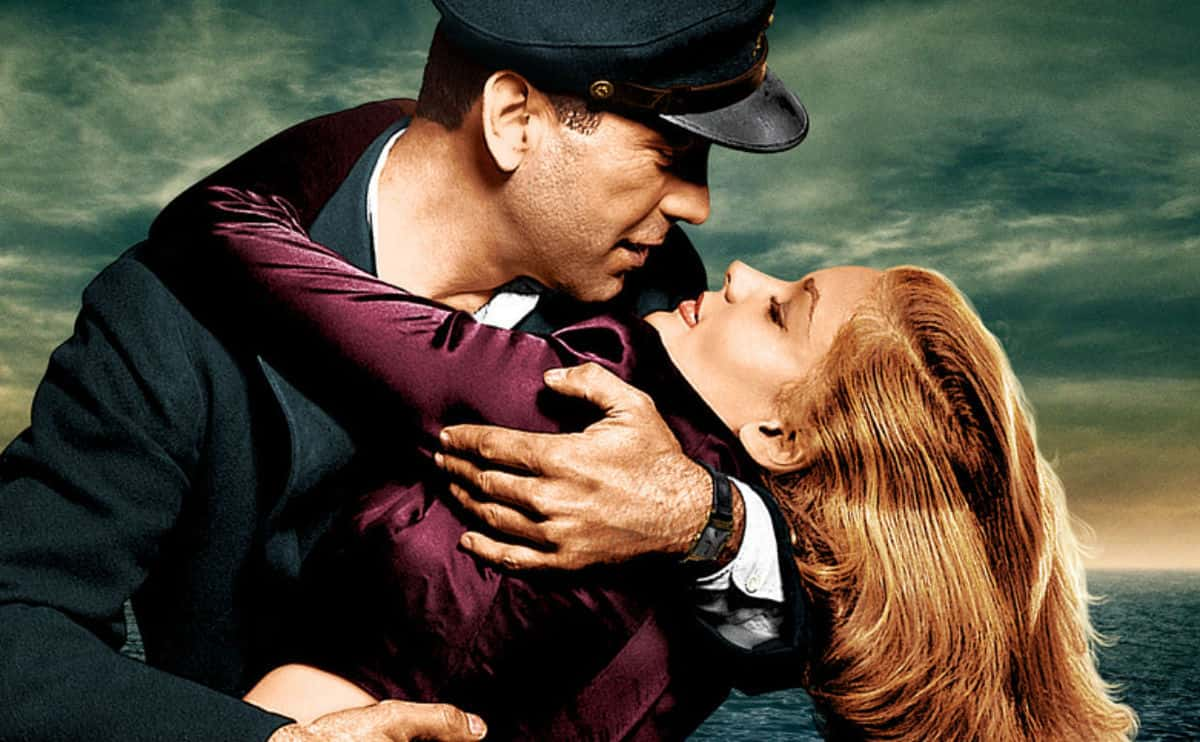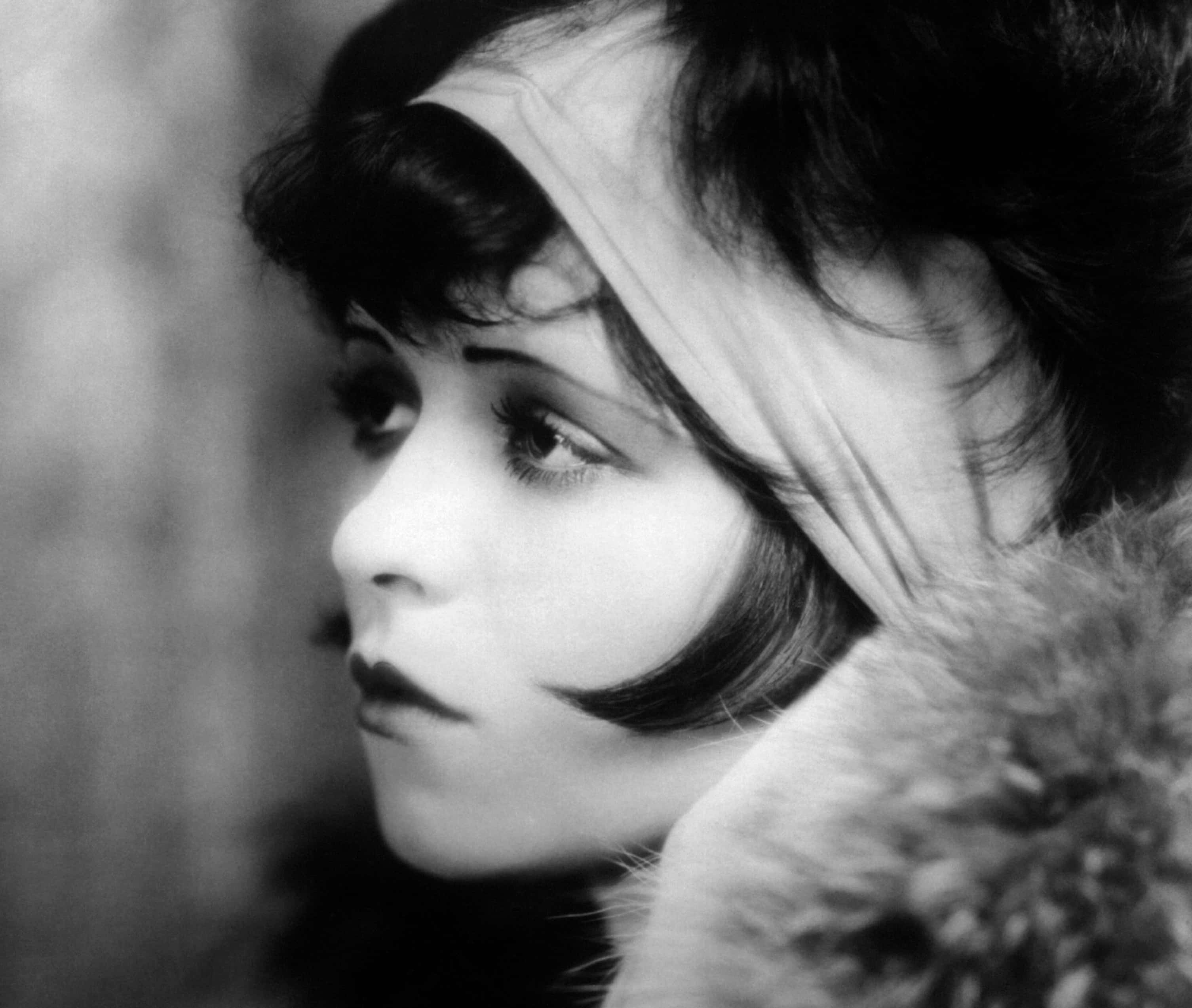Modern Hollywood scandals have nothing on those from the Golden Age of Hollywood. Back then, the studios worked overtime to cover up tales of illicit affairs, secret children, and sometimes even violent transgressions—but as everyone knows, these things always have a way of coming to light, especially as the years go on. From the early days of silent film up to the heyday of starlets like Marilyn Monroe in the 60s, there was nearly always a juicy scandal playing out behind the scenes of some of cinema's most iconic films. Here are 101 dark facts about Old Hollywood scandals.
1. What A Tramp
While he was busy capturing the hearts of the world with a prolific string of classic pictures, Charlie Chaplin was also a notorious womanizer. He once made a shocking confession: He claimed to have slept with over 2,000 women, and when he was asked what his ideal woman was like, he quipped, “I am not exactly in love with her, but she is entirely in love with me.”
Pretty gross there, Chap.
 The Bloggers
The Bloggers
2. Hook ‘em While They’re Young
One thing that Charlie Chaplin’s pursuits had in common was their youth. He first met and engaged in a romance with Edna Purviance when she was 19. He later moved on to Mildred Harris, who was 16 when the 29-year-old first met her. He impregnated the teenaged Lita Grey, whom Chaplin had first become interested in when he’d met her as a 12-year-old.
Incidents like these continued until the 54-year old Chaplin married the 18-year old Oona O’Neill, with whom he finally did have a decent marriage, as well as eight children. So that’s a happy ending for...Chaplin, at least.
3. Mister Misogynist
When it came time to film the horror film The Birds, it turns out that the real monster for lead actress Tippi Hedren was the film’s director, Alfred Hitchcock. Hitchcock famously became obsessed with Hedren, stalking her throughout the production and isolating her from the cast and crew while whispering vulgar profanities at her. When she (big surprise) didn’t take kindly to this kind of treatment, Hitchcock sabotaged her career behind the scenes.
Sadly, this kind of thing just happened in Old Hollywood, and there was not much for actresses like Hedren to do about it.
4. He Was Nothing But A Hound Dog
Despite being the King of Rock & Roll, Elvis Presley was incredibly insecure, especially where intimacy was concerned. This meant that Presley only desired young girls who hadn’t had any intimate experience which could put pressure on himself. This led to him asking managers to round up girls who were 16 or younger, which in most states was a tad unlawful even then, unless, of course, you were a music and movie star like Presley.
5. Can’t Swordfight Your Way Out Of This One
Long before Brad Pitt and Russell Crowe tried wearing sandals and fighting with swords, Errol Flynn was one of the biggest stars in Old Hollywood, known for his many romantic swashbuckling characters. However, this heroic image came crashing down around him when he was embroiled in a shocking trial where he was accused of statutory assault.
It didn’t help that he’d allegedly quipped that he liked his whiskey old and his women young. Even though he was acquitted, Flynn’s career never recovered from the scandal, and he slipped into alcoholism.
6. The Dangers Of The Action Star
Before Dwayne Johnson, before Tom Cruise, before Steve McQueen, before even Tyrone Power, there was action star Wallace Reid. Reid made a career out of doing his own stunts, playing daredevils in movies like The Roaring Road. However, that all changed in 1919 when an accident on the set of The Valley of the Giant caused Reid to live with such pain that he eventually became addicted to morphine.
This was back in the days when rehab was an unacceptable scandal, so the studio swept the issue under the rug and did all they could to hide Reid’s substance misuse. Finally, however, things got so bad that they relented and sent him to a sanitarium to kick his addiction. By this time, however, it was too little too late, as Reid’s withdrawal led to a heart attack, which ended him.
7. No Justice In Old Hollywood
In 1937, 20-year-old actress Patricia Douglas attended a party that took place after MGM’s annual sales convention. As one would expect, the party took on the nature of a college frat party if the frats were all millionaires. At one point, sales executive David Ross and an accomplice violated Douglas after forcing her to get inebriated.
When Douglas tried to press charges, MGM turned to their fixer, Eddie Mannix. Mannix ensured that the studio Ross worked for was never mentioned in the reports to suppress a scandal. Douglas’ reputation was questioned and ruined in the process.
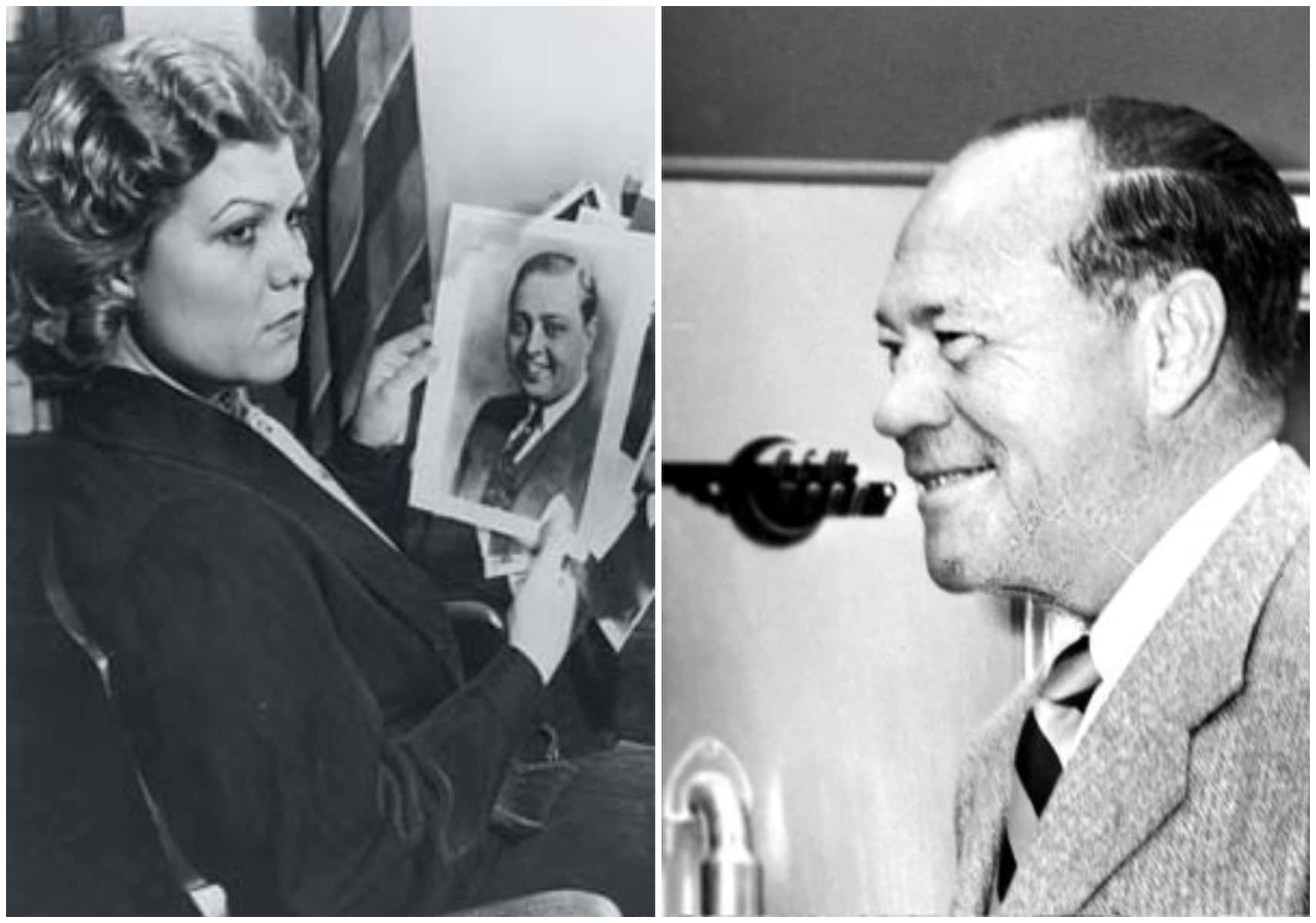
8. For Shame
In the silent era, no starlet was as famous as Clara Bow—which is why she was targeted by tabloid known as the Coast Reporter, which threatened to spread ugly rumors about her if she didn’t pay them to stop. Stories soon spread that Bow was dangerously fond of drink and dope alike. She was said to have slept with men and women, and even performed bestiality.
These lies, coupled with the attempted blackmail, led to the publisher of Coast Reporter being sentenced to an eight-year prison term, proving once and for all that you really can send put someone away for spreading fake news.
9. A Straight Giveaway
The 1935 film The Call of the Wild starred Clark Gable and Loretta Young as co-stars. During their time together on the film, Young became impregnated by Gable—clearly, a situation that's ripe for scandal. Young ended up leaving the country for an "extended holiday," took the baby to an orphanage in California, then returned sometime later to "adopt" her biological child.
She stuck by the adoption story, despite everyone realizing the truth due to the fact that her daughter had inherited her famous father’s distinctive ears.

10. The Day The Clown Departed
Thelma Todd was a very talented comedic actress who worked alongside Laurel and Hardy, Buster Keaton, and the Marx Brothers, to name a few. However, her incredible career was tragically cut short in 1935 when she was found lifeless from carbon monoxide toxicity at the age of 30. The passing was ruled a self-murder, though it flew in the face of her personal and professional lives both lacking a motive for taking her own life.
Rumors blamed her lover, Roland West, for murdering her, and even claimed that he’d confessed to taking her life on his deathbed. Regardless, it was an incredibly unfunny way for such a funny woman to go.
11. Sadly, He Wasn’t Faster Than A Speeding Bullet
Before Superman ever got his own movie, George Reeves played the legendary hero in an old television serial. However, Reeves became most known for being found lifeless in his Hollywood home, shot multiple times. The mystery of his passing shocked Hollywood for years and has never been solved.
12. Who Took Out Reeves?
One persistent fact which people point to in the mystery of George Reeves’ end is that he passed shortly after an affair with the wife of known Hollywood "fixer" Eddie Mannix—the kind of man who would arrange for shady things to be resolved behind closed doors.
13. No One Can Ever Know
Before she became one of the top leading ladies of her time, starlet Joan Crawford allegedly performed in at least one inappropriate film, and she may have been underage at the time it was made. We’ll never know the truth of this matter, because every copy of the film was allegedly hunted down by Crawford’s later employer, MGM Studio.
When Crawford parted ways with MGM in 1943, she paid them $50,000, an odd gesture in itself... unless one assumes it was a repayment for making her embarrassing—and damaging—film debut go away.
14. Fatal Attraction
Gloria Grahame may be best remembered for playing the beautiful-yet-vulnerable Violet in It's a Wonderful Life, but IRL, her life was incredibly dark, marked by multiple marriages—and one in particular sticks out. While separating from her husband, director Nicholas Ray, he made a truly disturbing claim. Ray said that he once came home and found Grahame in bed with his 13-year-old son from a previous marriage, Anthony.
15. Young Flame
Somehow this freaky Mrs. Robinson situation gets a whole lot weirder. In 1958, eight years after they were caught red-handed, Grahame and Anthony Ray got back in touch. Two years later, the lovebirds married in a wedding ceremony in Tijuana, Mexico—a well-known destination for highly respectable, pre-planned unions.
16. Get Outta Town
Though Grahame and Anthony kept their forbidden love under wraps for years, their secret leaked in 1962. The revelation ignited a blaze of tabloid speculation and scandal-mongering, with widespread denouncements of the union. Almost overnight, Gloria Grahame’s fading Hollywood star turned into total box office poison.
 Turner Classic Movies
Turner Classic Movies
17. A Difficult Marriage
Laurel and Hardy were a double act in the early days of Classic Hollywood. Hardy was the bad guy and Laurel was his bumbling straight man. Off-screen and off-stage, however, Stan Laurel was a violent alcoholic, and this became known when he went through his third divorce. Vera Shuvalova claimed that her husband had threatened her with a pistol, and it was printed that her friends once had to intervene when Laurel dug a grave in their backyard while proclaiming that he was going to bury her alive (Good God…).
The only thing which ultimately suppressed this scandal was the fact that Shuvalova was forbidden from talking about publishing anything about her marriage to Laurel when she signed their divorce agreement.
18. Sisters Before Misters?
Elizabeth Taylor was married so many times that it became something of a running joke, but the relationship that caused the biggest scandal occurred in 1957. After Taylor lost her third husband in a plane crash, she found comfort in the arms of his old friend, Eddie Fisher. The problem? Fisher was married at the time…to Taylor’s good friend Debbie Reynolds.
The fallout was naturally painful, though the two women managed to reconcile. As for Fisher and Taylor, their relationship lasted five years, so I guess it had been all worth it?
19. Don’t Cross Crawford
Harry Cohn was one of the big-time producers in Old Hollywood, actually serving as the inspiration for the movie mogul character Jack Woltz in The Godfather. Like many producers back in the day, Cohn was ruthless in demanding intimate favors from the actresses in his employ. A notable example of the contrary was Joan Crawford (yes, her again), who was immediately subjected to his advances when she signed a contract with Columbia Pictures.
Crawford reportedly told Cohn to “keep it in [his] pants,” threatening that she was having lunch with his wife and children the next day. Sadly, she did not leave a horse head in his bed when he continued his womanizing ways.
20. What A Nice Guy
Cohn’s use of his power wasn’t limited to getting beautiful women to buy their careers from him with intimate favors. One of the actresses who had to put up with Cohn’s advances was Kim Novak, who also became involved in a relationship with famous singer Sammy Davis Jr. This combination of jealousy over a rival and his prejudiced reaction to a white woman entering a relationship with a Black man allegedly caused Cohn to hire mobsters to threaten Davis Jr. with broken legs and blindness if he didn’t marry a Black woman immediately.
21. Good Riddance
When “King Cohn” finally passed on, his funeral was surprisingly well-attended. However, as Red Skelton famously joked, “It proves what Harry always said: give the public what they want, and they’ll come out for it.” This might rank up there with one of the biggest burns in Hollywood history.
22. Good Old Walt
By the time filmmaker Leni Riefenstahl arrived in the United States in 1938, Germany had already launched its horrific assault on the Jewish population. Riefenstahl’s own documentary Triumph of the Will, which filmed and glorified a huge rally held at Nuremberg, had already come out and was well-known worldwide. Only three people were present to welcome Riefenstahl to the US.
None other than Walt Disney happened to be one of them. Disney gave Riefenstahl a personal three-hour tour of his lot, which has only added more fuel to the accusations of Disney’s alleged anti-Semitism. Whether he was or wasn’t, it’s telling that Disney was the only studio head to meet with Riefenstahl.
23. Where Are Those Child Labor Laws??
You’ll never watch The Wizard of Oz the same way again after you find out just how tortured Judy Garland’s life was thanks to her Hollywood career. When she was set to star as Dorothy in the aforementioned film, she was 15, and already the studio was pushing her to lose as much weight as possible. Garland suffered mentally from the producers’ torment, and then physically when she became addicted to diet pills.
While this wasn’t exactly a full-blown scandal back in the day, it was considered extreme even for the time. The crew who worked on The Wizard of Oz reflected that they’d never seen such ruthlessness towards a youth before.
24. Despair During Bad Times
Many have been inspired by the iconic Hollywood sign which overlooks the movie-making capital of the United States, but when those inspirations fail, things can take a turn for the morbid. In 1932, Peg Entwistle, a struggling actress during the Great Depression, climbed atop the big "H" in the Hollywood sign, back in the days when it was actually the Hollywoodland sign, and tragically threw herself from it.
25. Too Ahead Of The Army’s Time
Despite being involved in a tragedy (and possible cover-up) so early in his career, John Huston moved away from it immediately after his directing debut, The Maltese Falcon, became a wild success in 1941. He then joined the United States Army, serving as a filmmaker with the rank of captain. His three films from that time have become highly acclaimed battle pictures, though two of them were censored by the army for the touchy subject matter which Huston examined.
One of them, Let There Be Light, focused on PTSD and the psychological damage found in veterans. It was censored until 1981, a full 35 years after it was made!
26. Talk About Passion
Serving his country wasn’t the only thing Huston was up to during WWII, however. Already into his second marriage, and before he himself went overseas, Huston began a fervent affair with Marietta Fitzgerald in New York while her husband was abroad. Allegedly, they once made love so fiercely that they broke a mutual friend’s bed. No doubt this led to an awkward apology the next morning!
27. No One Suffers Like The Bombshell
Marilyn Monroe's unprofessionalism on the set of Some Like It Hot has become the stuff of legend, with Monroe showing up hours late to the production and constantly flubbing her lines, which led to breakdowns on Monroe’s part. Her co-star, Tony Curtis, later quipped that if it hadn’t been for Monroe’s bra size, she would have been placed in a mental asylum, while director Billy Wilder was so infuriated by Monroe that he didn’t invite her to the wrap party when the film was finished.
When he was asked whether he’d work with her again, he joked that his doctors advised against it.
 Getty Images
Getty Images
28. Neither Pro-Life Nor Pro-Choice
In Old Hollywood, when a big-time actress had a career playing the seductress that all the men want to be with, the image might be spoiled if she got married or, God forbid, got pregnant and couldn’t perform. Film studios would apply serious pressure on such actresses to avoid marriage and even force them to end their pregnancy if the stork scheduled an appointment.
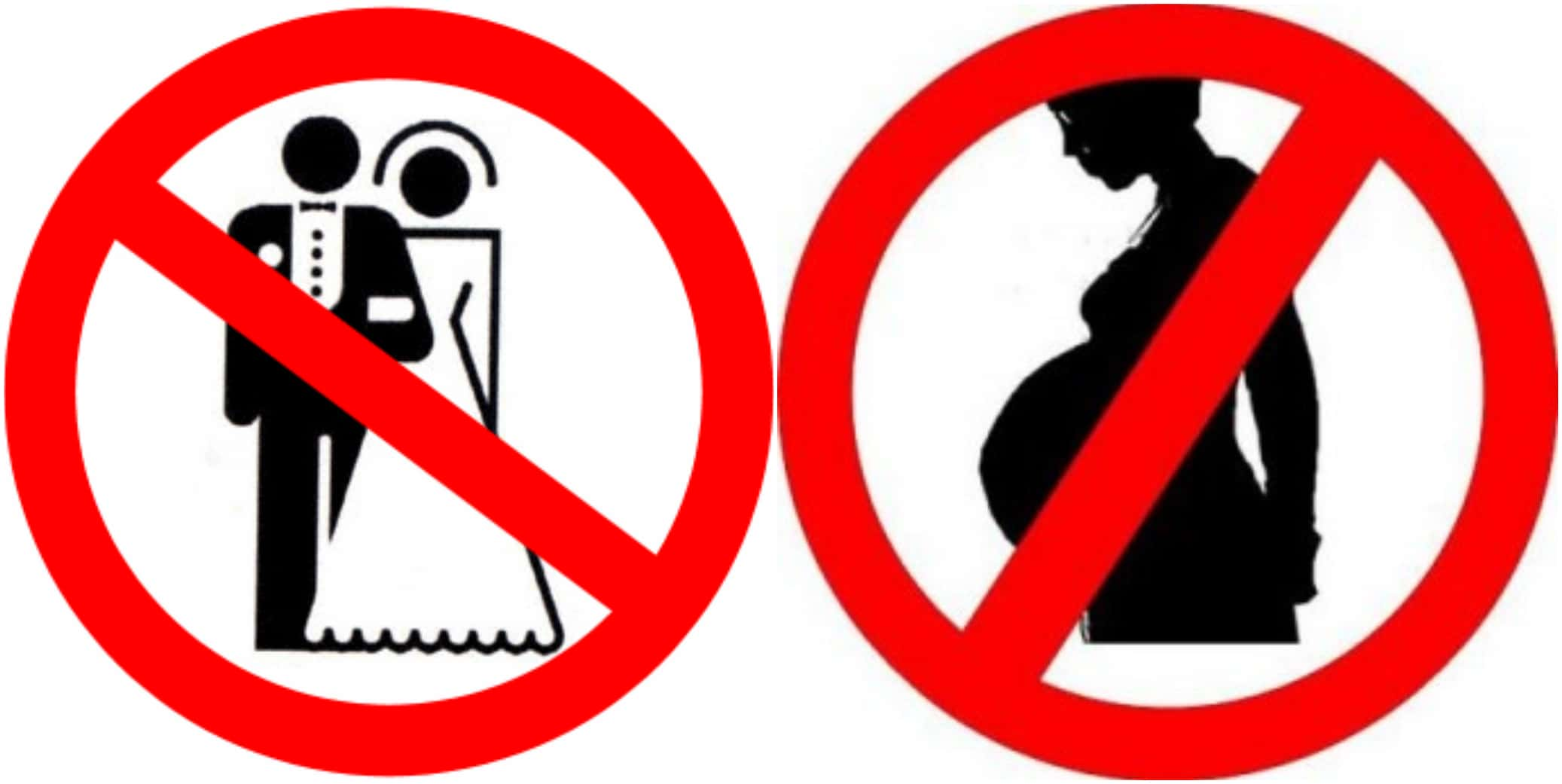
29. Romance Is Different In Hollywood
In her lifetime, Ingrid Bergman was hailed as a legendary actress, until she became better known for a scandal which shocked a society that was hooked on her wholesome cinematic persona. The news came out that she had begun an affair with director Roberto Rossellini when both were married at the time. They ended up divorcing their spouses to become an item, partly because Bergman had become pregnant with Rossellini’s child.
The pair would have three children together before divorcing in the 1950s. Despite the damage to her reputation, Bergman’s career endured, and she won another Academy Award later in her career.
30. Talk About A Young Offender
1958 bore witness to one of the biggest scandals ever to rock Old Hollywood. Johnny Stompanato, known mafioso and infamous boyfriend of renowned actress Lana Turner, was found lifeless in Turner’s home. Turner’s daughter, 14-year old Cheryl Crane, confessed to stabbing Stompanato after he had hurt her mother in the midst of a vicious argument.
Stompanato's end was ruled to have been justified, proving once again that being in the Mafia doesn’t pay off in a court of law.
31. It Could Have Been Much Worse
As shocking as it was that Cheryl Crane had knifed Johnny Stompanato, a few rumors persisted that things had gone down differently than was claimed by those involved. The most common of which was that Lana Turner had actually been the one to stab her boyfriend, and her daughter only took the fall because the court would look more favorably on murder if it was a minor who did it.
A more twisted rumor claimed that Turner hadn’t actually been threatened by Stompanato; she’d actually caught him in bed with her daughter! In her rage, she’d knifed Stompanato and forced Crane to take the fall. Frankly, we’re doubtful that this version is true, and we really hope that it isn’t.
32. No Wonder We Never See Dorothy’s Parents
One of the many actresses who was pushed into getting an abortion by the studio system was Judy Garland (yes, her again). However, in her case, the pressure came not just from greedy film producers, but also from her own mother. In fact, it was her mother who arranged it all, rather than the studio. And we thought Lindsay Lohan had had it rough…
33. The Rise And Fall Of Montgomery Clift
On May 12, 1956, actor Montgomery Clift fell asleep behind the wheel of his car and crashed into a telephone pole just moments after leaving a party hosted by Elizabeth Taylor (with whom he’d acted and also had a relationship with for a time). Taylor herself allegedly had to pull a tooth out of Clift’s tongue because he was choking on it.
Clift had to live with the lingering physical and mental pains for the rest of his life. To the surprise of nobody, he became addicted to booze and painkillers. Although his career still saw some bright spots, the remainder of his life after the accident was dubbed “the longest [self-murder] in Hollywood history.”
34. A Cursed Project
One of Clift’s last films was The Misfits, which was a commercial failure at the time, but which has since gotten a 100% rating on Rotten Tomatoes. It was directed by John Huston (told you he was a big deal), written by Arthur “Death of a Salesman” Miller, and starred Clift, Clark Gable, and Marilyn Monroe. With such a star-studded cast and crew at the wheel, you’d be amazed at how this well-made film destroyed the people who made it.
Monroe and Miller’s relationship deteriorated, with Monroe overdosing on the set. She would later die barely a year after the film was finished. Gable succumbed to a heart attack a few days after filming, and it has been speculated that it was brought on due to the stress of making the film. Clift’s career fizzled out after just a couple more movies, and five years after The Misfits was made, Clift was told by a friend that it was airing that night on television.
Clift hotly refused to watch it, which turned out to the final thing he would ever say, because he passed of a heart attack that very night. Seems like the only one to get out of that film intact was Huston!
35. Don't Shoot The Messenger
Frank Sinatra had campaigned vigorously with John F. Kennedy and had reportedly been a wingman of sorts to assist in Kennedy’s notorious record for womanizing. However, when Kennedy went on to win the election in 1960, he was advised to put some distance between Sinatra and himself, due to Sinatra’s alleged Mafia connections.
Kennedy thus canceled a 1962 stay at Sinatra’s Palm Springs mansion, going to rival singer Bing Crosby’s house instead. Sinatra was so furious at the snub that he personally took a sledgehammer to the newly-made heliport that he’d made to accommodate the President and his entourage.
36. Lived Fast, Left Young
On September 30, 1955, James Dean was driving his Porsche 550 Spyder at high speed when he crashed into a car speeding in the opposite direction. He was 24 when he passed on, having only performed in three films, two of which hadn't even hit theaters yet. He would receive two posthumous Oscar nominations, a record that nobody is likely to beat—we hope.
37. The Force Cannot Save This One
In one of the most infamous moments of foreshadowing in the history of American pop culture, James Dean met with renowned British actor Alec Guinness and took the moment to show off his new car. Guinness allegedly warned Dean that “If you get in that car, you will be found [lifeless] in it by this time next week.” Guinness’ prediction proved horrifyingly accurate when Dean met his end in a car crash seven days later.
38. The Brangelina Of Their Day
As beloved as Frank Sinatra was during his time (inspiring the phrase Sinatramania before anyone had even heard of the Beatles), things took a turn when he infamously divorced his wife, Nancy, so he could marry renowned actress and femme fatale Ava Gardner, with whom he’d been having an affair. The press soundly criticized Sinatra’s actions, tarnishing his once-reasonably wholesome reputation permanently.
Gardner and Sinatra also had a turbulent marriage, even though Gardner was responsible for saving his career by getting him the part in From Here to Eternity. However, they did remain friends for life after they split up, so at least they were cool about everything.
39. A Dark Origin Story
Before he made his directorial debut, a young John Huston was busy trying to make it as a screenwriter when he struck dancer Tosca Roulien with his car, ending her life. Although he was absolved of blame in court, he was so haunted by what had happened that he left Hollywood for five years, drifting through Europe until 1937.
A rumor of the time, however, suggested that it was actually renowned actor Clark Gable who had accidentally offed Roulien, and Huston had been paid to take the fall.
40. Who’s Marrying For Love?
Old Hollywood, like the rest of Western civilization at the time, was very cruel towards people who identified as LGBTQ—well, at least, slightly crueler than in the 21st century. Some people rose to high positions during their careers, but they feared losing all their success and livelihood due to their non-hetero orientations.
Therefore, the term "lavender wedding" came into being—a sham wedding with a partner that would serve purely to avoid suspicious talk.
41. Welcome To The Rock
One of the most famous examples of a famous Hollywood figure engaging in a lavender marriage to protect himself was Rock Hudson. As his bachelorhood endured despite being one of the most desirable movie stars of the 1950s, Hudson feared being driven out of Hollywood if his secret got out. His agent set his secretary up with Hudson. Their marriage resulted in, unsurprisingly, a bitter divorce.
42. An Award-Winning Triangle
Dangerous (1935) was the role that got Bette Davis her first Oscar for Best Actress…but it also arguably kick-started her feud for Joan Crawford. While filming Dangerous, Davis fell in love with her co-star, Franchot Tone, whom Crawford was dating. Their chemistry did not go unnoticed by Crawford, who pressured Tone into a quick engagement while they were still filming.
Davis never forgave Crawford for “stealing” back her own man.
43. More Than Frenemies?
In more amicable days, Joan Crawford tried to make nice with Bette Davis by sending gifts and flowers to the latter’s dressing room. Davis glibly shot down Crawford’s olive branches as “lesbian overtures.” Rumors that Crawford fancied men and women alike followed her throughout her career, which leads some avid theorists to suggest her feud with Davis was fueled by spurned attraction as much as jealousy.
44. Revenge Is A Dish Best Served In Gold
Bette Davis famously did not win her 10th and final Oscar nomination for What Ever Happened to Baby Jane? To add insult to injury, her co-star Joan Crawford was there to rub salt in the wound. Crawford had convinced the four other Best Actress nominees, who could not show up, to let her accept on their behalf if they won.
Not being able to beat those 4-to-1 odds, Davis had to watch her lifelong enemy Crawford take the award onstage.
45. Nothing To Hide
In an age where actors desperately tried to hide any aspect of their personal life, Clara Bow bore it all in a piece titled “My Life” for Photoplay magazine. While this may seem normal now, at the time, her first-person narrative was hugely controversial not so much for its content—but for the very idea that a star should be honest about their life.
46. Cast Of Crazies
Mary Pickford, along with D.W. Griffith, Charlie Chaplin, and Douglas Fairbanks formed the United Artists studio in 1919. The studio was intended to protect their work and to wrest control from commercially-minded producers and distributors. This event is said to have given rise to the saying “the lunatics have taken over the asylum,” remarked by Richard A. Rowland, then head of Metro Pictures.
47. Barred By Bigots
Gone with the Wind premiered at Loew's Grand Theater in Atlanta, Georgia on December 15, 1939. Producer David O. Selznick wanted to bring African-American actress Hattie McDaniel (who played Mammy) along to the premiere, but MGM advised him not to on account of Georgia's segregation laws at the time. Clark Gable, McDaniel’s co-star, was outraged and threatened to boycott the premiere unless she was permitted to attend.
McDaniel convinced him to attend anyway, and the premiere went ahead without her. She went on to become the first African-American Oscar winner for her role in the film, winning Best Supporting Actress.
 BOT
BOT
48. An Affair To Remember
Katharine Hepburn’s relationship with Spencer Tracy is one of Hollywood’s most legendary love affairs. They had a relationship for 27 years until Tracy’s passing in 1967. Tracy was an unhappily married father of two when they met, but he never pursued a divorce and remained married throughout the whole affair. They made a total of nine films together.
49. Unlucky In Love
Rudolph Valentino impulsively married his first wife, actress Jean Acker, in 1919, two months after they met. Acker had only seemed to be interested in women at the time and had reportedly been involved in a love triangle with actresses Grace Darmond and Alla Nazimova. Whether or not she was ever actually romantically interested in Valentino is unclear, but her decision to marry him was one she regretted almost immediately.
She locked Valentino out of their hotel room on their wedding night, the couple separated soon after, and Acker moved back in with girlfriend Grace Darmond soon after. They finalized their divorce in 1922, but ironically became good friends afterward.
50. Not-So-Smooth Sailing
Valentino's second marriage was even rockier than the first. Rambova and Valentino lived in separate apartments in New York City while they waited out the year required of them by the courts, and they legally remarried on March 14, 1923. Rambova was not popular with a number of Valentino’s friends—June Mathis among them, whom he fell out with.
The marriage disintegrated to the point where Rambova was contractually banned from his sets towards its end, and they divorced in 1925. It was a bitter end, too—Valentino left Rambova one single dollar in his will. Ouch.
51. The Woman In Black
For decades after Valentino’s passing , a veiled woman in black has arrived at his tomb on the anniversary of his passing to place a single rose on his grave. The identity of the woman was a mystery at first, until it was revealed that the whole thing was—you guessed it—a publicity stunt, this time cooked up by press agent Russel Birdwell in 1928.
When this got out, several copycats vied to be the new “Woman in Black” and the tradition continued. Film historian Karie Bible is the most recent to have taken up the mantle.
52. Attention Seeker
The feud between Sophia Loren and Jayne Mansfield could be summed up in the famous picture where an annoyed Loren takes note of Mansfield’s revealing neckline. To provide more context, Loren was hosting a party in Beverly Hills as an attempt to get her name out there, but Mansfield proceeded to upstage her with her usual tricks of revealing clothes and “accidental” wardrobe malfunctions for extra publicity.
According to Loren, one reason she had her eye on Mansfield’s chest was that she was expecting another one of Mansfield’s wardrobe malfunctions to happen at any moment. Despite her frustration and disdain, Loren would refuse to autograph any copy of that famous picture out of respect for Mansfield’s memory.
53. Sibling Trouble
Joan Fontaine and Olivia de Havilland, despite their wildly different surnames, were sisters. However, things were complicated between them even from childhood, when they became bitter rivals from the start. Their mother made things worse by favoring de Havilland over Fontaine, which added further fuel to the fire.
54. It’s On Now
When they both became actresses, Olivia de Havilland and Joan Fontaine began competing for roles against each other. Fontaine got one over de Havilland when she was cast in the Alfred Hitchcock films Rebecca and Suspicion, winning an Oscar for the latter. De Havilland never forgave her for having a thriving career, so that when she won an Oscar of her own in 1947, she refused to shake Fontaine’s hand while accepting it—Fontaine was hosting the Oscars that year.
55. See You Never
The final straw between Olivia de Havilland and Joan Fontaine occurred when their mother passed on in 1975. According to Fontaine, de Havilland never invited Fontaine to the funeral, while de Havilland claimed that Fontaine had apparently had better things to do—given that this was the mother who openly picked favorites with her kids, we’re inclined to believe either story might be true. Either way, the sisters didn’t speak to each other again until Fontaine’s passing more than 35 years later.
56. The Battling Bogarts
Before marrying Lauren Bacall and becoming one-half of one of the most high-profile Hollywood couples of the era, Humphrey Bogart was married to actress Mayo Methot. And it was not a smooth relationship. They both drank heavily and fought regularly, eventually earning the moniker “The Battling Bogarts” in the press. Methot became known as “Sluggy” due to her combative nature, and Bogart would later name his yacht Sluggy in her honor.
57. Bogart, Bacall, And Methot
Bogart fell in love with Bacall on the set of To Have and Have Not, and they began an affair. At 3 am one morning, Bogart called Bacall, saying “I miss you, Baby,” before Methot, who had caught wind of the affair, tore the receiver from his hand and screamed at a terrified Bacall down the line.
58. From Riches To Rags
In more ways than one, Roscoe “Fatty” Arbuckle was the biggest star in America. The first actor to receive a million-dollar paycheck, Arbuckle was more popular even than Charlie Chaplin. Arbuckle was on top of the world in 1921, and so he was entitled to take a little vacation. On September 5, Labor Day, he and some friends rented a string of rooms at the St. Francis Hotel in San Francisco and threw a little cocktail party.
The party proved to be the biggest mistake of Arbuckle’s career.
59. Turn For The Worse
After a nap, Arbuckle woke to discover his party had been crashed by several uninvited guests. Among them was Virginia Rappe, an actress with a reputation for overdoing it at parties. Rappe appeared to be in great distress, clutching her stomach and tearing at her clothes. She lay in bed at the St. Francis Hotel for two days before being taken to hospital.
60. Accused
While Rappe was in hospital, her friend, Maude Delmont, told doctors Rappe had been violated by Arbuckle. While doctors found no signs of assault and Delmont had a reputation as an extortionist, authorities took the report seriously and speculated that Rappe’s organs must have been crushed under Arbuckle’s weight.
61. In The Doghouse Now
Rappe passed from a ruptured bladder on September 9, 1921. Fatty Arbuckle, charged with manslaughter, turned himself in to the authorities. He was placed in block #12 of San Francisco’s Hall of Justice to await trial.
62. Sunk
Reports of Virginia Rappe’s ordeal and passing devolved into lurid stories and speculation, which made headlines around the country. William Randolph Hearst’s papers especially promoted the story. Hearst later said the Arbuckle scandal had been the biggest-selling news story since the sinking of the Lusitania.
63. Mom The Miser
Joan Crawford adopted a brood of four children, doting on each of them and lavishing them with many gifts. When she passed in 1977, they were heartbroken—until the contents of her will revealed the dark truth. Though she left two of her children a small sum of money, she infamously shut out her two other children entirely from an inheritance.
As she said, "It is my intention to make no provision herein for my son, Christopher, or my daughter, Christina, for reasons which are well known to them."
 Night Gallery, Universal Television
Night Gallery, Universal Television
64. So Fresh And So Clean
Joan Crawford's obsessive cleanliness reared its pristine head even in her bedroom affairs. In his memoirs, Kirk Douglas recalled a particularly disturbing and bizarre romantic encounter when the two stars once went back to Crawford's house. In the middle of the act, Douglas reports, Crawford leaned in and murmured into his ear—but it was far from sweet nothings.
"You're so clean," she said. "It's wonderful that you shaved your armpits when you made Champion." As Douglas put it, her passionate outburst was "a real conversation stopper."
65. Taking A Break
By 1931, executives sometimes referred to silent film star Clara Bow as “Crisis-a-day-Clara.” The pressure of fame, her fading star, and a troubling lawsuit from her secretary put Bow’s mental health in a bad place. Entering a sanitorium at the age of 25, she asked to be released from her final film with Paramount. This retreat effectively ended her career.
66. Frances Farmer: A True Rebel
There are few celebrities with as colorful, captivating, and crushing lives as Frances Farmer. She was a rebellious spirit in a time that demanded conformity. Her stunning beauty and care-free attitude towards Hollywood, the feds, and everything else has inspired countless rebels after her, but Farmer’s life was not an easy one.
Farmer had an unfortunate addiction to many things she shouldn’t have. She was constantly puffing on darts, but she had even darker habits. She was also frequently inebriated in public, which was the root of many of her issues.
67. Fight Night
One of the most infamous Farmer stories involves her getting into a fight with a hairdresser and subsequently running down Sunset Boulevard without a shirt. Oh, and that night she also got into a bar fight. Busy girl.
68. The Great Escape
In early 1943, authorities put Farmer into a mental hospital for her increasingly erratic behavior. After spending a short time there, the actress pulled off an incredible feat. Nine months after entering the hospital, the Hollywood beauty actually managed to escape her prison by scaling a wall. Not all heroes wear capes, people.
 Wikimedia Commons
Wikimedia Commons
69. The Horror
While under psychiatric care, doctors diagnosed Farmer as a paranoid schizophrenic. Sadly, that was just the beginning of the nightmare. The standard treatment at the time was not only electroshock therapy, but also insulin shock therapy, where doctors injected the patient with heavy doses of insulin daily, often causing comas.
Farmer claimed to have once gone through this form of therapy for 90 days straight.
70. Another Fallen Idol
Montgomery Clift was crippled by personal demons, booze, and drug addiction. Even Marilyn Monroe reported that he was “the only person I know who is in even worse shape than I am.”
71. Safe To Say He Learned Nothing
Debonair star Errol Flynn caused a huge scandal in the last two years of his life when he traveled with a 15-year-old secretary named Beverly Aadland. Aadland was also Flynn’s mistress at the time, a situation which had actually been encouraged by Aadland’s mother, Florence. The proud parent later wrote a book about her daughter’s affair with Flynn.
Later, Beverly herself revealed some disturbing aspects of their relationship. According to her, their love was built on a constant sense of play and outdoing one another, but these jokes often had a dark side. They would get into enormous fake fights in nightclubs where Flynn would pretend to hit her, and she would pretend to get a nosebleed. Sounds...fun?
72. Big Brother Flynn
At the height of his fame, Flynn bought property on Mulholland Drive and built the “Mulholland Farm,” or as it was often called in private, the “playhouse.” Flynn hosted wild parties at this property, which featured all kinds of debauchery that Old Hollywood’s private gatherings were known for.
73. Peep Show
However, there was a dark side to the “playhouse”—it was set up to be a voyeur’s dream home. Peep-holes and two-way mirrors were set up to allow Flynn to spy on his female guests. He also set up microphones to overhear private conversations throughout his house. Why hasn’t there been a horror movie made about this guy?
74. Suspicious Circumstances
Marilyn Monroe was found lifeless at her home on Fifth Helena Drive in Brentwood on August 5, 1962. The evidence from that day is still haunting. She had a phone in one of her hands, and her body was completely bare and face down on her bed. There was no odor of substances on her mouth, as would be consistent with intentionally deadly pill ingestion.
75. Probable Cause
Marilyn’s passing was ruled a “probable self-murder,” but toxicology tests were only carried out on her liver. When the deputy coroner tried to obtain her other organs for testing, he was told they’d been destroyed. Details like this have become part of the myriad conspiracy theories surrounding the star's tragic, untimely end.
76. Goodbye, Cruel World
The last person to ever talk to Monroe was actor Peter Lawford. He called the starlet to convince her to come to his party, but was alarmed when she sounded sleepy and possibly inebriated. Her last words to him before she drifted away were, "Say goodbye to Pat [Lawford's wife], say goodbye to the president, and say goodbye to yourself, because you're a nice guy."
77. For Once In My Life, Believe Me
Despite playing a sailor in several movies, one of the early scandals to plague Frank Sinatra’s career was the rumor that he was a draft dodger during WWII. Even after claims that he had bribed a doctor $40,000 to declare him medically unfit to serve, the FBI accepted his reasoning that his punctured eardrum and psychological trouble genuinely had him declared unfit fit for service, and that's why he never joined the army.
78. Don’t You Dare Hit Me!
One of the most famous moments of the film In the Heat of the Night involves Virgil Tibbs (played by the legendary Sidney Poitier) being smacked by a rich old white man, only for him to smack him back in response. This scene was unprecedented at the time, and shocked audiences nationwide. It remains uncertain whether Poitier improvised that smack on the day of filming, or whether it was originally in the script, but regardless, the scene has rightly been recognized as a watershed moment in Hollywood when it comes to the topic of racism.
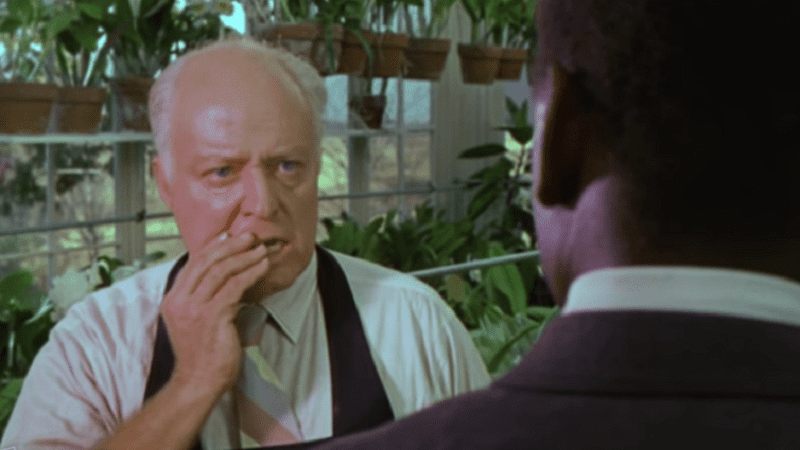 In the Heat of the Night, United Artists
In the Heat of the Night, United Artists
79. Scandal In The Presidential Suite
Perhaps because of her early start in Hollywood, Elizabeth Taylor was a precocious and overly mature child, with some shocking consequences. One of her biographers claims that when she was only 15 years old, the well-developed Taylor ended up in bed with a 36-year-old Ronald Reagan, who was a well-known actor at the time.
Reportedly, the teenaged Taylor went to the future President's place and they soon began kissing on his couch before moving to the bedroom. As she later told her friend, "Reagan was treating me like a grown woman, and that thrilled me."
 Wikimedia Commons Ronald Reagan is second from the left
Wikimedia Commons Ronald Reagan is second from the left
80. Not All Bad Press Is Good Press
Although it wasn’t the biggest of hits at the time of its release, Citizen Kane has gone on to become recognized as one of the greatest films ever—if not the greatest. Orson Welles portrayed a fictionalized version of a real-life publishing tycoon, William Randolph Hearst. Hearst himself was quite livid at the film and he wouldn’t even allow any mention of it in his newspapers.
His anger and refusal to publicize the film in his papers drove people away from seeing the film, which resulted in poor attendance at the box office.
81. Someone To Watch Over Him
Frank Sinatra racked up quite a large FBI file over the course of his lifetime. Beginning with his arrest in 1938 for "adultery and seduction" (some very Sinatra-esque charges), his lasting habits of fighting, drinking, and womanizing, as well as his advanced ties to the mob, kept him on the Feds' radar for decades—amassing an impressive file of no less than 2,403 pages.
 sinatragallery
sinatragallery
82. The Tasmanian Liar
The story that Merle Oberon generally told about her birth was that she was born and raised in Tasmania, Australia. If pressed for details, she would demur by claiming that her birth records had been destroyed. As the years wore on, more and more people began to question her cover story—including the press, and even some members of her own family.
83. Caught In A Lie
Oberon's birth certificate said that she'd been born in Bombay to an Indian mother and a British father, but that birth certificate hid a twisted secret—Charlotte Selby, the woman listed as her mother, was actually her grandmother. Charlotte’s 12-year-old daughter Constance was Oberon’s real mother, and the starlet's real father is unknown to this day.
In order to avoid prevent public embarrassment, Charlotte put her own name on the birth certificate. Oberon was raised to believe that she was Constance’s sister. Sadly, Oberon spent most of her career attempting to keep this all a secret, including her mixed-race parentage.
84. Certified Platinum
For a time in the 1930s, Jean Harlow was the biggest star in Hollywood. Her vampy good looks, easy glamour, and natural sensual appeal earned her the nickname “The Blonde Bombshell,” but underneath her polished façade was a tender soul too often misused by studios and wracked with heartache—all the way until her devastating end.
85. The Bare Truth
At the height of her fame, rumors abounded that Harlow only slept in the buff—and perhaps more scandalously, that she never wore underwear.
86. Babes In Arms
Jean Harlow got a reputation as a bit of a mafioso's moll: she dated mobster Abner Zwillman, and was even an informal godmother to the daughter of infamous tough guy “Bugsy” Siegel. Critic and writer Graham Greene once even crudely commented on her acting, “Her technique was a gangster’s technique—she toted [her bosom] like a man totes a [pistol].”
Um, whatever you say, Graham.
87. Paul And Jean Forever
After their deep friendship developed into something much more, MGM executive Paul Bern and Jean Harlow married on July 2, 1932. Bern was one of the only people who truly believed in Harlow as a serious actress and selflessly wanted her to succeed. It was a loving marriage—but sadly, it was doomed to an utterly heartbreaking end.
88. Infamous Last Words
Just two months after the wedding, officers found Bern lifeless in the couple’s home from a gunfire wound. When authorities first took in the disturbing scene, many speculated that Harlow had taken the life of her new husband. The truth was actually much darker; In the short self-murder note that lay beside beside Bern, he wrote his devastating final words.
These words were also incredibly mysterious, and have puzzled old Hollywood sleuths to this very day. "Dearest Dear,” the note read, “Unfortuately [sic] this is the only way to make good the frightful wrong I have done you and to wipe out my abject humiliation, I Love [sic] you. Paul You understand that last night was only a comedy.”
89. No Small Matter
Interpretations about what Bern meant when he referred to his “frightful wrong” and the reasons for his self-murder are varied, and many of them scandalous. After his passing, rumors abounded that he was impotent or embarrassed about the size of his manhood. Other theories claimed that his family history mental illness finally overtook him.
 Getty Images
Getty Images
90. Mr. Fix-It
Film historians have long suspected that MGM studios tampered with the evidence from the scene. Allegedly, they sent notorious fixer Eddie Mannix to alter the scene before the authorities arrived in order to avoid dragging Harlow’s name through the mud.
91. Murder Mystery
There is, however, one final, disturbing possibility. Though authorities soon cleared Harlow of any involvement in Bern’s end, many still suspect the note was a fake and that someone took Bern's life. Indeed, many Hollywood insiders believe that Bern’s ex-lover, Dorothy Millette, took his life in a jealous rage, an allegation that one of Bern’s biographers backs up.
Tragically—and perhaps tellingly—just days after the murder, Millette jumped off of a ferry and ended herself. Nonetheless, the official cause of Bern’s passing remains a self-murder.
92. Tragedy Comes In Twos
Harlow’s heartache was far from over. In 1937, her health took a terrifying turn. She had been mildly ill for months, but while filming Saratoga, the star began to complain of nausea, bloating, and abdominal pain. It got so bad that she had to lean on her co-star and friend Clark Gable between takes. When they found out the truth, it was too late.
On June 6, 1937, Harlow was taken to the hospital. That night, she slipped into a coma. By the next morning, she was gone. She was only 26 years old.
93. Low Point
At one point, Veronica Lake was one of the most in-demand actresses in Hollywood. However, Lake had a reputation for being difficult on film productions. After burning one too many bridges, her film career began to crumble. Between that and the end of her third marriage, Lake ended the 1950s in near bankruptcy, turning her back on Hollywood.
She was also struggling with alcoholism to the point where her public intoxication and disorderly conduct resulted in several arrests.
94. Head Case
During the conflict, Bette Davis tragically lost her second husband, Arthur Farnsworth, but he did not die in battle. However, his end was due to violent reasons: he passed out in a Hollywood street and was gone two days later. When the autopsy came back, it revealed that he had succumbed to a skull fracture that had incurred two weeks before.
Davis testified she didn’t know what could possibly have caused the fatal injury. Farnsworth’s passing was labeled an accident.
95. All Good Things Must End
The publicity of Mary Pickford’s marriage to Douglas Fairbanks Sr. sadly contributed to their relationship’s disintegration. Their schedules were filled up with movie-making or public appearances of one form or another. Pickford and Fairbanks also struggled with the end of the silent era, leading Fairbanks to embark on an affair. The two of them divorced in 1936.
According to Douglas Fairbanks Jr., his father and his stepmother always regretted the failure of their marriage.
96. What A Woman!
Mae West was a woman leagues ahead of her time, and not just because she was, along with women like Clara Bow, among the first seductress personas of Hollywood. West was challenging the status quo through her writing all the way back in the 1920s. Under a fake name, West wrote, directed, and starred in a 1926 Broadway play titled after a certain intimate act people love to do.
Despite strong sales, West drew the ire of religious groups, whose protests led to the authorities raiding the theatre and arresting the cast, including West herself.
97. Exploiting The Exploiters
When she was taken in by authorities for corrupting the morals of America's youth with her sensual Broadway play, Mae West was sentenced to ten days in prison, with the option of paying a fine instead of serving time. West, however, surprised everyone by serving her time in prison. Mindful of how this scandal would only draw further attention to herself, West decided to take advantage of the publicity.
She built up her bad girl image by quipping that she wore her silk panties throughout her prison time (during which she’d dined with the warden and his wife).
 wyborcza
wyborcza
98. She’s Here, Get Used To It
If the moralists of the time thought that some days in prison would chasten Mae West, they were utterly mistaken. West’s next play was The Drag, a comedy-drama with LGBTQ themes. You can just imagine how many monocles popped at that news. The play wasn’t even allowed to be performed in New York due to widespread protests.
West herself didn’t let it phase her, proudly proclaiming her support for LGBTQ rights by defying the censors of the time.
 pinterest
pinterest
99. The Girl Can’t Help It
Known for her impressive bust, Jayne Mansfield lost no opportunity to have a series of wardrobe malfunctions in public, showing off for the cameras. This was partly fueled by her rivalry with Marilyn Monroe, and also because she was eager to use all the publicity she could get. However, many eventually grew tired of the joke, and her stunts became steadily more negatively received.
She’s often been credited with popularizing the bikini and also paving the way for people such as the Kardashians. Feel free to debate whether that’s a positive or negative legacy.
100. An Untimely End
In 1967, Jayne Mansfield got into a car with her attorney, her driver, and three of her children. It would be the last car ride of her life, as just before 2:30 AM, the car crashed into the rear of a tractor-trailer, having failed to notice the trailer slowing down. The three adults, including Mansfield, instantly lost their lives, while the sleeping children in the rear of the car suffered only minor injuries.
One of those sleeping children was her three-year-old daughter, Mariska Hargitay, who most people know as Det. Olivia Benson on Law & Order: SVU. Rumors abounded that Mansfield had been decapitated by the crash, but these reports were only slightly exaggerated from the severe head trauma which had been cited as the cause of his demise.
Sources: 1, 2, 3, 4, 5, 6, 7, 8, 9, 10, 11, 12, 13, 14, 15, 16, 17, 18, 19, 20, 21, 22, 23, 24, 25, 26, 27, 28, 29, 30, 31, 32, 33, 34, 35, 36, 37, 38, 39, 40, 41, 42, 43, 44, 45, 46, 47, 48, 49, 50, 51, 52, 53, 54, 55, 56, 57, 58, 59, 60, 61, 62, 63, 64, 65, 66, 67, 68, 69, 70, 71, 72, 73, 74, 75, 76, 77, 78, 79, 80, 81, 82, 83, 84, 85, 86, 87, 88, 89, 90, 91, 92






